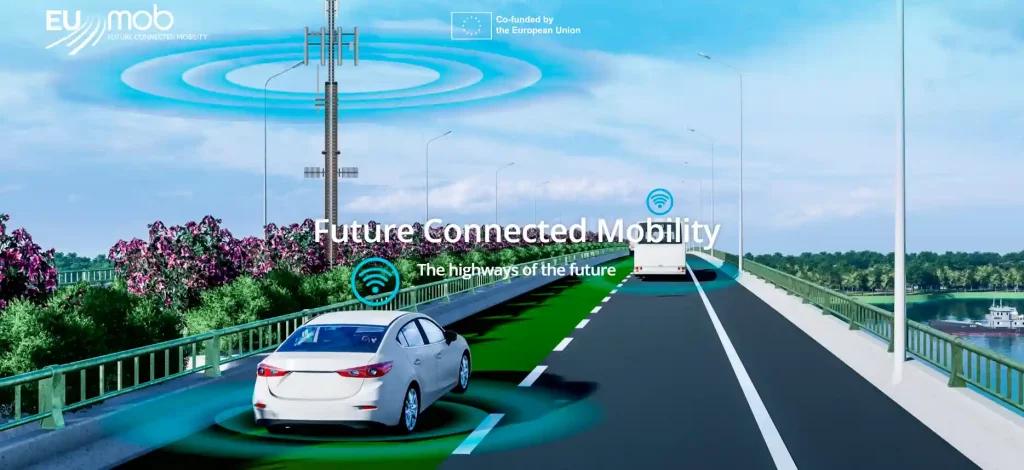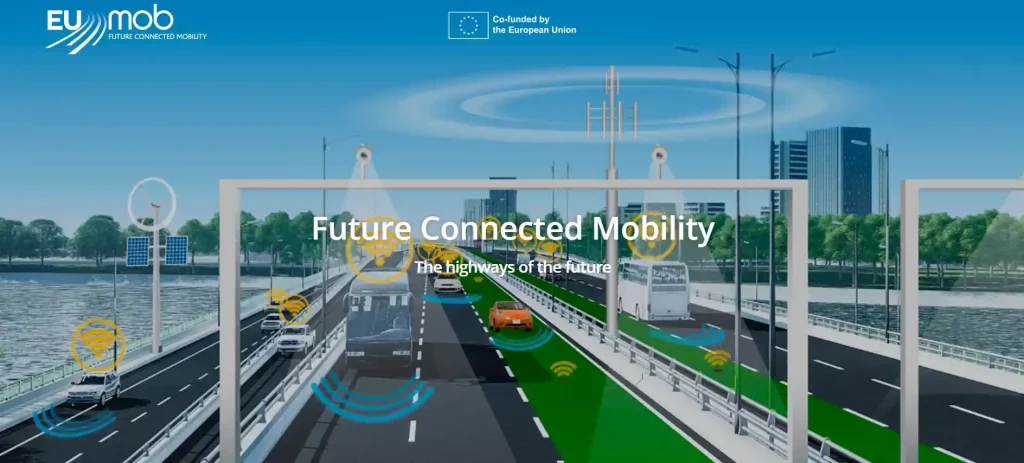Trends
Trends
OCT
20
2023
Technology
Cross-border roads’ digitalization
The digitalization of cross-border roads between Spain and France will save more than 2,000 million euros per year, according to the conclusions of the EUMOB project. To achieve these savings, which will be derived mainly from the reduction of accidents, pollution and travel time, the necessary investment to be made would amount to 423.6 million euros, that includes the digitalization of traffic orchestration processes, and the detection and notification of hazards and anomalies on the road, according to the conclusions of the study.
In the case of Spain, which would involve the deployment of EUMOB in 5,627 kilometres, an initial investment of 240 million euros and 4.27 million euros per 100 km would be needed.

Autopistas’s CEO, Daniel Vilanova, affirms that “the conclusions of this study for a pioneering project show us the way to be able to advance in the transformation of our roads facing the challenges of electric and sustainable mobility, of connected or autonomous vehicles and guaranteeing at the same time a safe, intelligent and sustainable mobility”.
EUMOB is a study coordinated by Autopistas, the subsidiary of Abertis in Spain, and has had the participation of Cellnex Telecom, and the support of the General Directorate of Traffic (DGT) and the Ministry of Transport, Mobility and Urban Agenda (MITMA). It is a comprehensive feasibility study for the digitalisation of European road infrastructure to support the harmonised deployment of advanced services for connected mobility and the further development of business ecosystems driven by transport and mobility-based services. The project was approved by the European Commission and presented within the framework of the CEF-2 5G Corridors program, within the modality of studies.
The EUMOB project seeks to respond to the new challenges of mobility, such as the preparation of high-capacity roads for electric, connected and/or autonomous vehicles, ensuring safer, smarter, and more sustainable mobility, and highlighting the benefit that the digitalization of road corridors will also mean for road network managers, emergency services, logistics and fleet operators, as well as for the passengers themselves.
Economic impact from the first year
As the estimated annual economic impact of the deployment of the project in 100 km is 4.27 million euros – mostly associated with the reduction of accidents, pollution, and travel time – it can be affirmed that the investment to be made is convenient since it translates into a benefit for society after the first year of EUMOB’s operation.
Autopistas, coordinator of the study, has released the conclusions of the analysis carried out for the harmonized deployment of advanced services for connected mobility and the subsequent development of business ecosystems driven by services based on transport and mobility.
Participants in the EUMOB study have assessed the customisation and adaptation requirements for road digitalisation along these corridors, analysing their costs, measuring the expected socio-economic and environmental impact and engaging stakeholders at local level to gain their support.
The feasibility study focused on the French and Spanish sections of the Atlantic and Mediterranean cross-border corridors, which are part of the European TEN-T network.
Among the study results, it is worth highlighting the definition of a solution model that describes the technical implementation of the digitalization of the infrastructure, a return-on-investment model, and a business plan that determines how the components of the digitized infrastructure are sustained and exploited.
Thanks to the results, the project promoters can have the necessary plans and background to carry out a follow-up project, which will allow for the implementation of a solution model in the designated corridors.
New advances towards connected mobility
The study has prioritized and analysed five cases that would have a total annual economic impact of 0.9-1.3 million euros for Spain and 1.2-1.6 million euros for France.
Digitalisation and improved connectivity along high-capacity roads will create a framework for public administrations and the private sector to participate in the conceptualisation, deployment, and operation of a harmonised solution for high-capacity roads.
Based on the results of this study, the European Commission will deploy the Work packages envisaged under the CEF-2 5G Corridors programme.
For Oscar Pallarols, Global Innovation, Business Development and Technology Director of Cellnex, “the study allows us to optimise the deployment of the 4 corridors awarded to us by the European Commission as well as in potential new proposals in the future”.
The 5G corridors initiative is one of the multi-country projects of the EU Digital Decade Strategy. CEF Digital envisions establishing a pan-European transport network of 5G corridors by 2027. These infrastructures are seen as key enablers for deploying tomorrow’s connected and automated mobility. They will also serve to strengthen the digitalisation of rail operations and provide services beyond the transport sector in areas surrounding the corridors, including rural areas.
Cellnex is working on 4 other projects within this programme: two road corridors linking Spain with France (Barcelona – Montpellier/Toulouse and Bilbao – Bordeaux) and two corridors linking Spain with Portugal (Salamanca – Porto – Vigo and Mérida – Évora). It is also involved in another study, called 5G GAIL, which has studied the feasibility of digitising the roads between Italy and Austria.
Cellnex also has experience in similar deployments that advance the mobility of the future. As leader and coordinator of the 5GMED project, co-funded by the European Commission, it is developing cross-border 5G application scenarios in advanced cooperative connected and automated mobility services (CCAM) and the future rail mobile communications system (FRMCS) in the Mediterranean Corridor, between Figueras and Perpignan. Also, through the Cellnex Mobility Lab located at the Parcmotor circuit in Castellolí (Barcelona), the company designs, develops and tests the future of connectivity infrastructures with a strong focus on their sustainability and their applications for connected and autonomous vehicles.


















